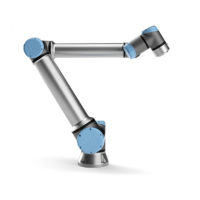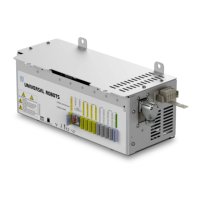14.23 Command: Pattern
A “Switch Case” construction can make the robot change behavior based on sensor
inputs or variable values. Use the expression editor to describe the base condition
and define the cases under which the robot should proceed to the sub-commands of
this Switch. If the condition is evaluated to match one of the cases, the lines inside
the Case are executed. If a Default Case has been specified, then the lines will
be executed only if no other matching cases were found.
Each Switch can have several Case’s and one Default Case. Switches can
only have one instance of any Case values defined. Cases can be added using the
buttons on the screen. A Case command can be removed from the screen for that
switch.
14.23 Command: Pattern
The Pattern command can be used to cycle through positions in the robot program.
The pattern command corresponds to one position at each execution.
A pattern can be given as one of four types. The first three, “Line”, “Square” or
“Box” can be used for positions in a regular pattern. The regular patterns are de-
fined by a number of characteristic points, where the points define the edges of the
pattern. For “Line” this is the two end points, for “Square” this is three of the four
corner points, where as for “Box” this is four of the eight corner points. The pro-
grammer enters the number of positions along each of the edges of the pattern. The
robot controller then calculates the individual pattern positions by proportionally
adding the edge vectors together.
If the positions to be traversed do not fall in a regular pattern, the “List” option can
be chosen, where a list of all the positions is provided by the programmer. This
way any kind of arrangement of the positions can be realized.
CB3 II-90 Version 3.4.5
Copyright © 2009–2017 by Universal Robots A/S. All rights reserved.

